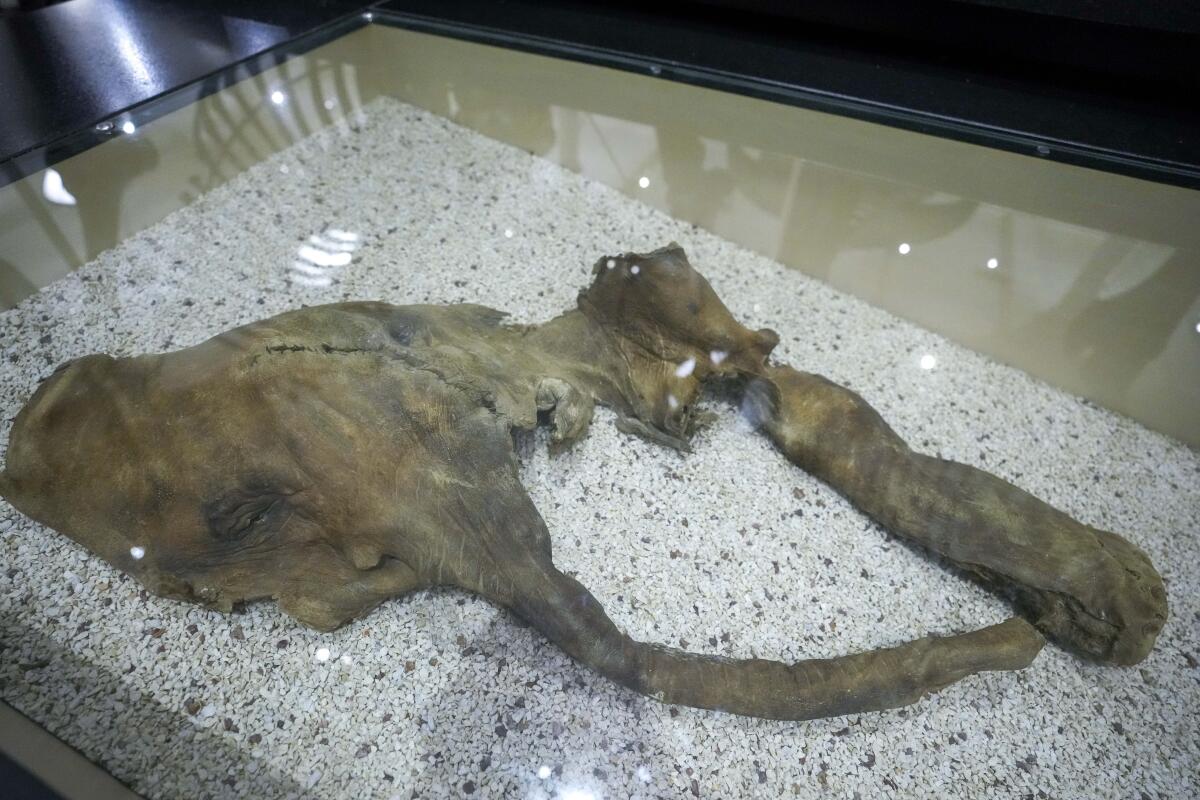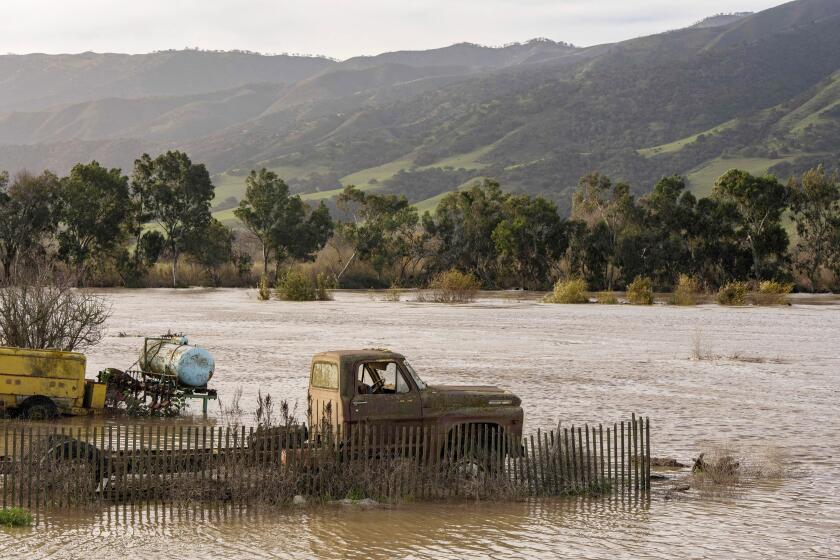Claim of mammoth bones brings treasure hunters to New York City river

- Share via
NEW YORK — Ask people what you might find buried in the muck at the bottom of New York City’s East River and they’d probably say “mob boss” before thinking of mammoth bones.
But several groups of treasure hunters have taken to the waterway in recent weeks after hearing a guest on Joe Rogan’s podcast claim that a boxcar’s worth of potentially valuable prehistoric mammoth bones was dumped in the river in the 1940s.
Despite a lack of evidence, treasure seekers using boats, diving gear and technology such as remote-operated cameras have gone searching, in hopes the murky waters are hiding woolly mammoth tusks.
“I think the chances are just as good as the lottery. And people buy those tickets every day,” said Don Gann, 35, of North Arlington, N.J., a commercial diver who’s been out on the water since early this month with his brother and two workers.
Flood warnings were in effect for wide swaths of Northern California as new storms threatened flooding in some regions.
It all started when John Reeves, an Alaskan gold miner with a passion for fossils, came onto “The Joe Rogan Experience” — which has been criticized for airing false COVID-19 information — for an episode Dec. 30 to talk about his land, where he said he has personally uncovered age-old bones and tusks.
In the first half of the 20th century, under previous ownership, digging for gold unearthed a trove of prehistoric mammal remains.
Some of that material was brought to New York City decades ago to be handed over to the American Museum of Natural History.
Reeves cited a draft of a report put together by three men, including one who worked at the museum, that included a reference to some fossils and bones deemed unsuitable for the museum being dumped into the river.
“I’m going to start a bone rush,” Reeves told Rogan, before reading from the draft and giving a location: East River Drive, now known as the FDR Drive, at around 65th Street.
“We’ll see if anybody out there’s got a sense of adventure,” he said, later adding, “Let me tell you something about mammoth bones, mammoth tusks — they’re extremely valuable.”
After the episode aired, the American Museum of Natural History threw cold water on the tale.
“We do not have any record of the disposal of these fossils in the East River, nor have we been able to find any record of this report in the museum’s archives or other scientific sources,” it said in a statement.
When reached by the Associated Press via telephone, Reeves refused to talk beyond telling a reporter to read the pages of the draft he had posted on social media before hanging up. He didn’t answer other calls and emails.
The pages posted on social media identify three men as the authors: Richard Osborne, an anthropologist; Robert Evander, who formerly worked in the American Museum of Natural History’s paleontology department; and Robert Sattler, an archeologist with a consortium of Alaska Native tribes.
Reached by the Associated Press, Sattler said the story about the dumped bones came from Osborne, who died in 2005.
The document cited by Reeves was real, he said, and written in the mid-1990s. But it wasn’t something intended for an academic journal. It was a starting point for something — maybe a book — based on Osborne’s knowledge of a period in Alaska when mammoth remains were being discovered in plenty. Osborne’s father worked at a company involved in the digging.
Sattler said Osborne spent time around the operation as a young man and probably heard the story secondhand about surplus bones being dumped in the river. Sattler said he didn’t have any specifics beyond Osborne’s recollections.
“He would have had some knowledge from somebody telling him that they dumped some excess material in the East River,” he said.
Mammoth remains discovered in Alaska did wind up at the American Museum of Natural History, including some still on display today.
The section of the Manhattan shoreline where Reeves claimed the bones were dumped underwent major changes in the 1930s and 1940s, as the East River Drive, later renamed for President Franklin D. Roosevelt, was constructed on fill and pilings. The highway opened fully to drivers in 1942, raising questions about how someone would have dumped a huge trove of bones without disrupting traffic.
Gann said he’s seen about two dozen other sets of fossil hunters in the time he’s spent searching for mammoth remains out on the East River.
Visibility in the East River is extremely poor, he said. On a good day, you can see maybe a foot in front of you. The current at the bottom is strong.
But the avid diver, who appeared in Discovery’s “Sewer Divers,” has a thing for searching out unusual finds — although mammoth bones are admittedly on a different scale than finding a Paul Revere spoon at an estate sale.
“I’ve hunted for weird artifacts my entire life, so this one, it just kind of fits into my repertoire,” Gann said.
He and his crew haven’t found anything, which he admits is disappointing, but it has spurred him to do some of his own digging into history. He’s switched his sights to a location off the southern part of Brooklyn, saying it would have been a more likely site for cargo to be dumped than the East River off Manhattan.
“If I find nothing, then I find nothing. I gave it an honest shot,” Gann said.
More to Read
Sign up for Essential California
The most important California stories and recommendations in your inbox every morning.
You may occasionally receive promotional content from the Los Angeles Times.











